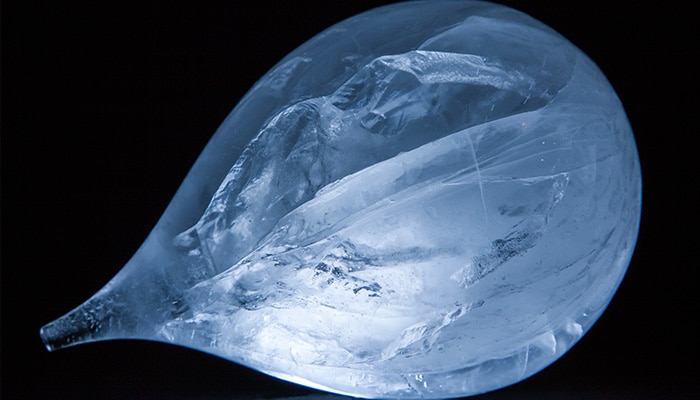While we believe that the books and resources recommended may be of value to you, keep in mind that these are suggestions only and you must do your own due diligence to determine whether the materials are appropriate and suitable for your use. PNC has no sponsorship or endorsement agreement with the authors or publishers of the materials listed.
WINTER

Ice Globes
Children will explore water on a frozen surface.

Lesson Objective
Children will explore how water reacts on a round, frozen surface.
(Science) Science(Art) Art(Music) Music
What You'll Need
Note: Balloons are used in this activity, but they are removed before the exploration.
- Latex-free balloons - 1 per child, plus a few extra
- Water - enough to fill each balloon
- Foil pans - 1 per child (to place the globes in as children are exploring)
- Magnifying glasses - 1 per child
- Pipettes - 1 per child
- Cups - 2 per child
- Food color - 1 bottle each of blue and yellow
What To Do
Note: This activity requires balloons to be filled and frozen at least two days before the exploration. Before taking the frozen balloon globes into the classroom, remove the balloons and discard them.
- Distribute the ice globes in the foil pans and the magnifying glasses to the children.
- Allow the children some time to examine the ice globes (see Guiding Student Inquiry).
- Ask children what they think might happen if water were dripped onto the globe.
- Tell the children that they will be exploring what water will do when dripped onto a frozen round surface.
- Distribute pipettes and one cup of colored water to each child.
- Tell the children to use the pipette to drip the water onto the frozen surface.
- Give them some time to explore, and then introduce the second color of water.
- Allow the children to continue exploring until the ice is melted.
- Discuss their findings (see Guiding Student Inquiry).
Resources
Home School Resources
Home educators: use these printable lesson PDFs to teach this lesson to your home schoolers. They're available in English and Spanish.
Content Provided By
Common Core State Standards Initiative – These lessons are aligned with the Common Core State Standards ("CCSS"). The CCSS provide a consistent, clear understanding of the concepts and skills children are expected to learn and guide teachers to provide their students with opportunities to gain these important skills and foundational knowledge [1]. (External) Visit the CCSS


